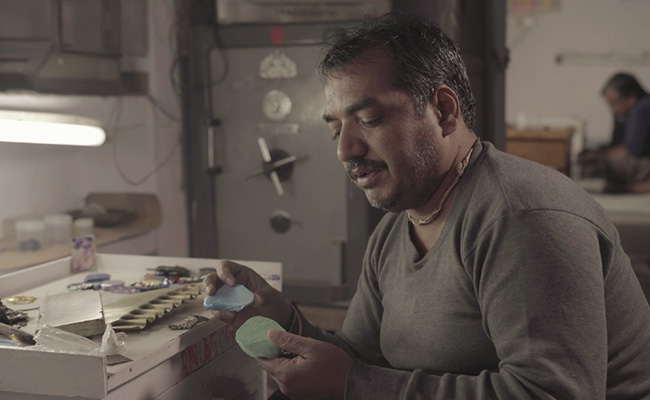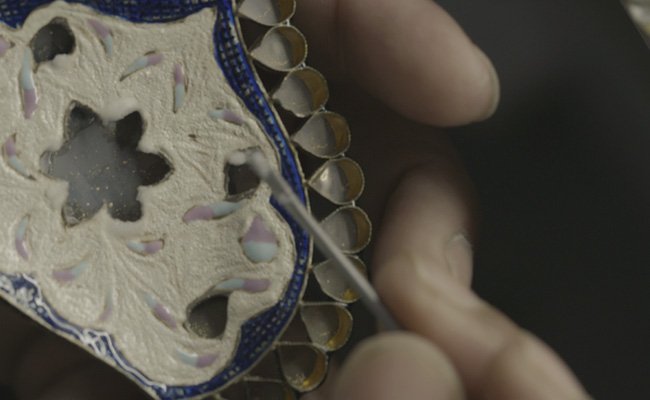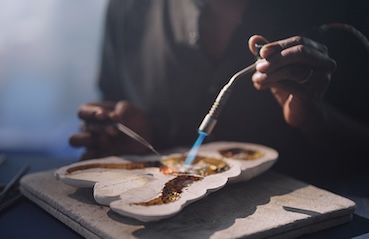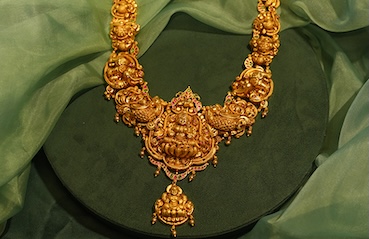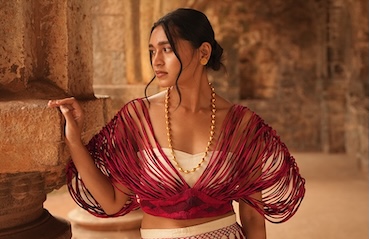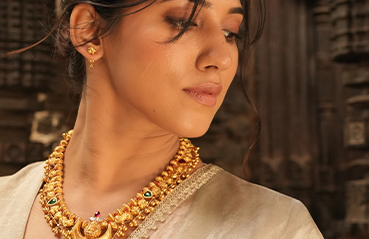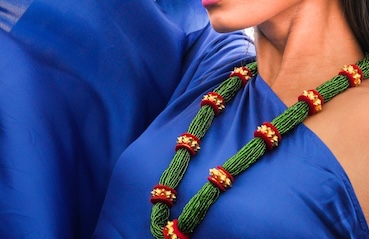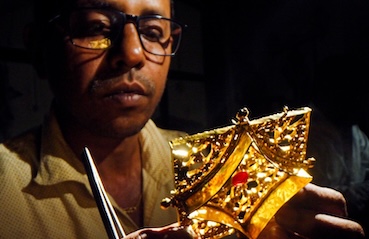Published: 21 Oct 2020
Meenakari : The hands behind handcrafting
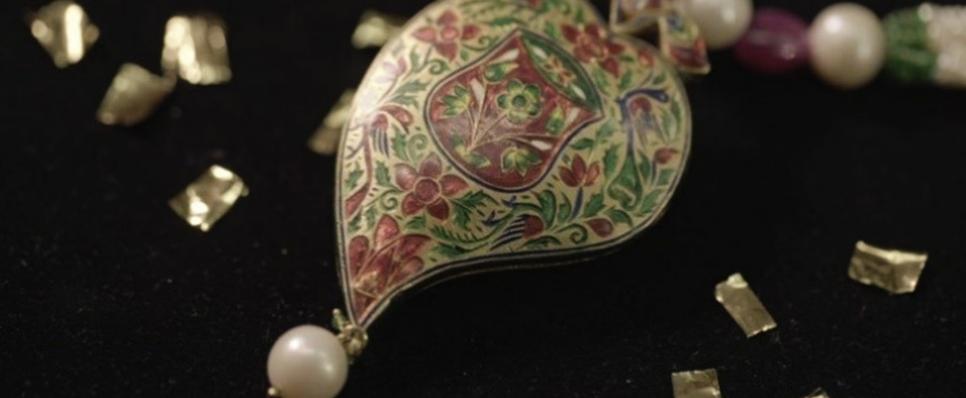
As you enter the cobbled streets and navigate the narrow gullies of Johri Bazaar, Jaipur, you are immediately hit by the chatter of men sporting wide turbans and handlebar moustaches, delicious aromas wafting from local eateries, the vivid colours of beautiful fabrics, and glitter from the resplendent gold jewellery worn by veiled women. These lanes lead you to 150-year-old gulabi havelis that still echo the memories of royal Rajasthani durbars held here ages ago. These venerable havelis enshroud the jewellery workshops, in which reside the guardians of heritage and inheritors of their colourful gold jewellery craft – the Meenakars.
Meenakari is one of the oldest jewellery art forms in India, and this revered craft is an ode to the country’s gold legacy. The ancient, intricate Mughal art of Meenakari involves enamelling the surface of gold with luminous colours by Karigars, who have painstakingly passed on the knowledge from generation to generation. It has its origins in Iran and is now exclusively found in Jaipur and Bikaner.
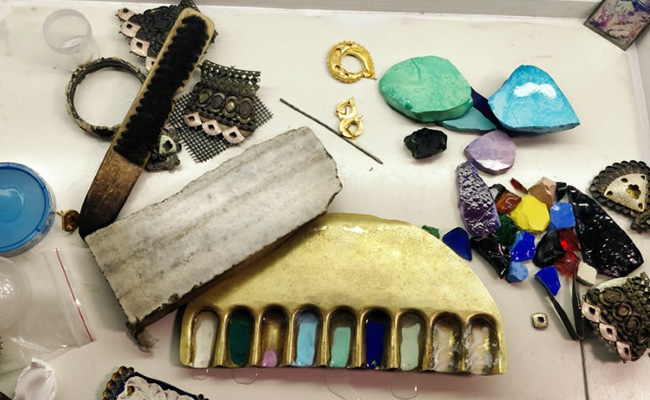
Meenakar’s workstation
It is quite astounding to find out that these exquisite pieces of art are born in the modest workshops of proud artists. As you stand at a Karigar's workstation and watch him turn stone and metal into an ageless piece of art, you understand and appreciate the intricacy of this art form better.
About the Karigars
Hunched over their workstations, the Meenakars’ resources might be limited but that does not stop his nimble fingers from carefully putting together the pieces of the puzzle. Sitting at their tables for hours on end, the Meenakars toil tirelessly as they bring to life the colours and inspiration that originate in their minds. Meenakars Vikas and Ramesh Soni work with the grace, finesse, and clarity of thought that can only come from spending almost 30 years perfecting this art form. The Soni brothers believe it is vital for a Meenakar to let his intuition guide him over the gap between conception and realisation without compromising the integrity of the original idea.
In conversation with Meenakars Vikas and Ramesh Soni
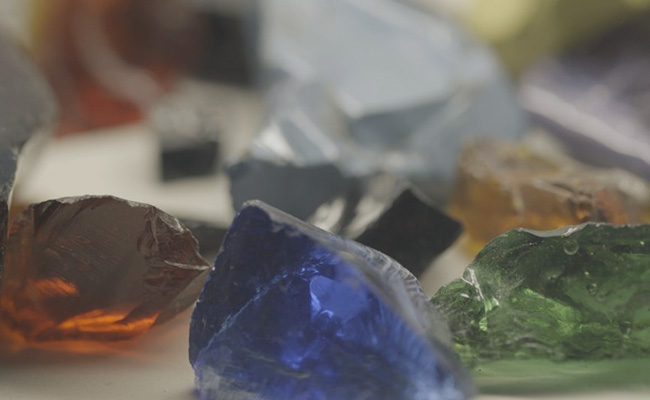
Meena glass pieces imported from Switzerland
Cleanliness is sacrosanct for the Meenakars. Vikas Soni tells you that the glass pieces are washed with acid and ground before they are stored in small boxes. The coloured powders are mixed with water when they have to be used.
Next, you bear testimony to the dance of Vikas’ nimble fingers as he picks up the needle and intuitively decides how much colour to scoop from the palette to apply on the 22-karat hallmarked gold jewellery piece. To prevent overlapping, three layers of colours are applied – darker colours like red and green are applied first, colours like blue and orange are applied next in the interstitial spaces, and finally, white enamelling is applied to fill the remaining gaps.
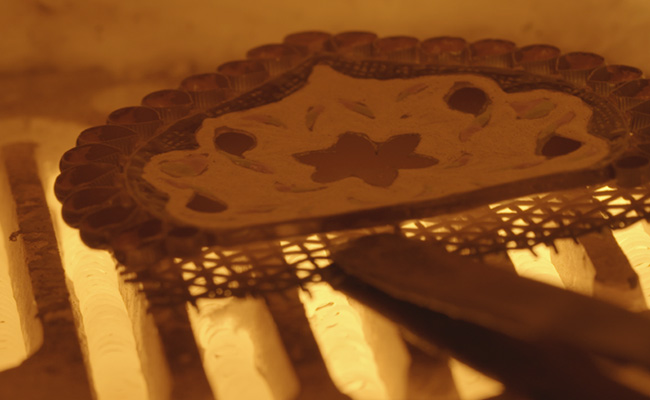
Furnace used to melt the Meena colours
Between each layer of application, the jewellery piece is heated for 5–10 minutes in a 2000-watt furnace. With the skill of a surgeon, Vikas stokes the fire in the furnace and carefully places the gold jewellery piece inside, as he tells you that this is where 30 years of experience comes in handy. He just looks at the piece and knows when its ready. Now that’s a master at work.
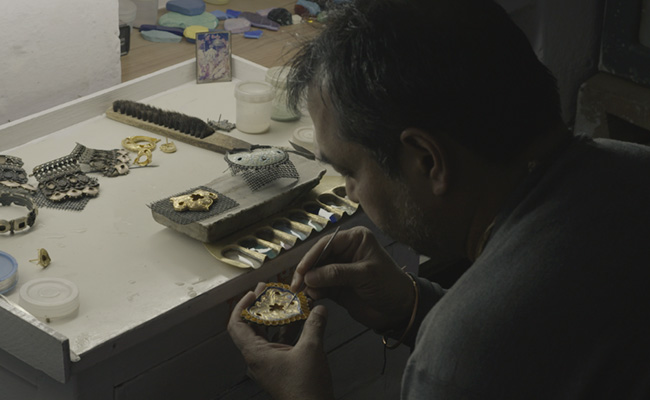
Vikas Soni applying the second layer of enamel to the jewellery piece
With an undertone of pride in his voice, Vikas tells you that he can create many distinct designs and colour combinations, without repetition, by using simple tools. The Meenakar’s mind will never run out of inspiration since it is essentially drawn from nature and architecture featuring Meenakari work. A case in point is the nearby Galta Mandir, where ethereal Meenakari work has stood the test of time. Another instance of architectural inspiration is the City Palace, whose famous peacock motifs find expression in Meenakari jewellery as well.
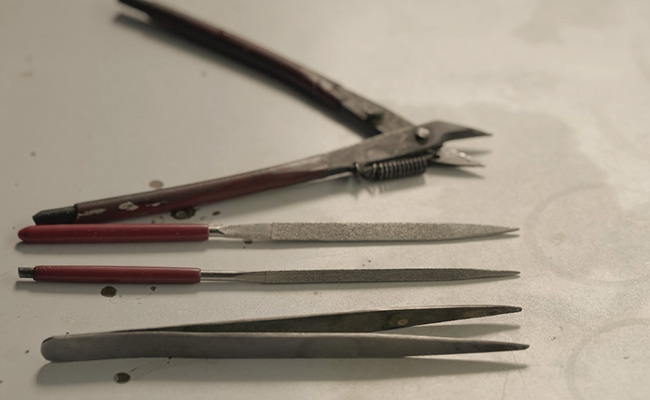
Equipment used by the Karigars for Meenakari work
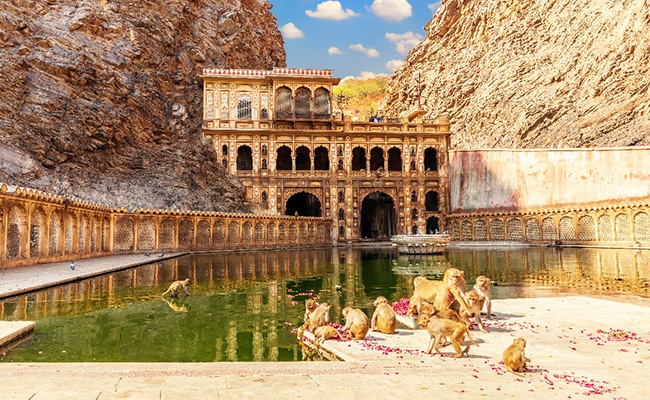
Galta Mandir, Jaipur – a major source of inspiration for the Meenakars
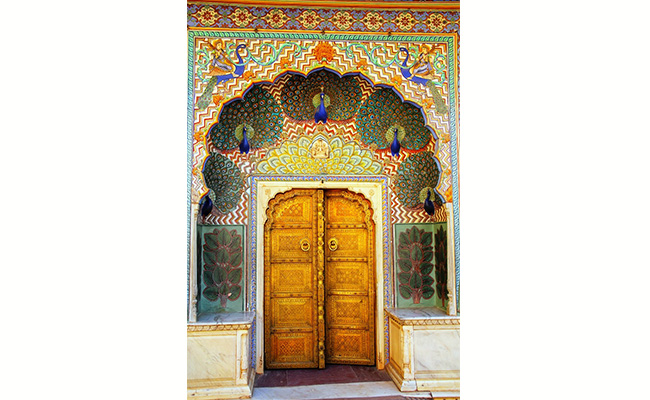
City Palace, Jaipur – another source of inspiration for the Meenakars
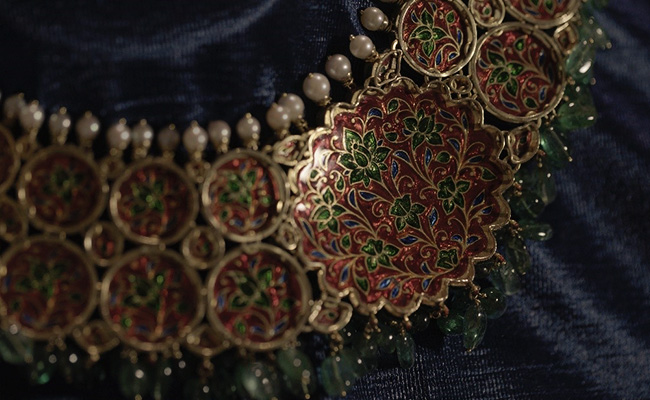
Meenakari piece inspired by the peacock motifs in the City Palace
In terms of colours, the Meenakars prefer to opt for red and green for leaves, and blue for birds such as peacocks. Intricate detailing like fighting birds or flowers with stalks require a combination of enamelling colours, which again is no complication in the Meenakar’s skilled hands.
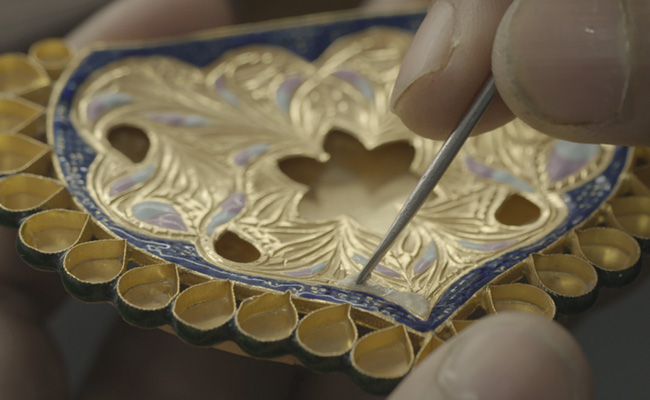
Careful lining of the remaining spaces with Meena colours
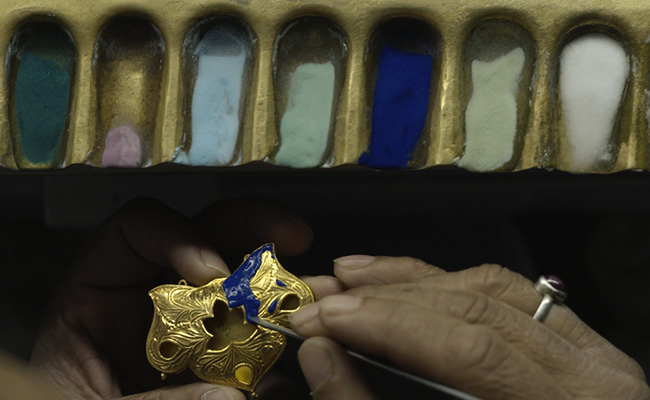
Applying multiple colours on a single piece requires concentration and skill
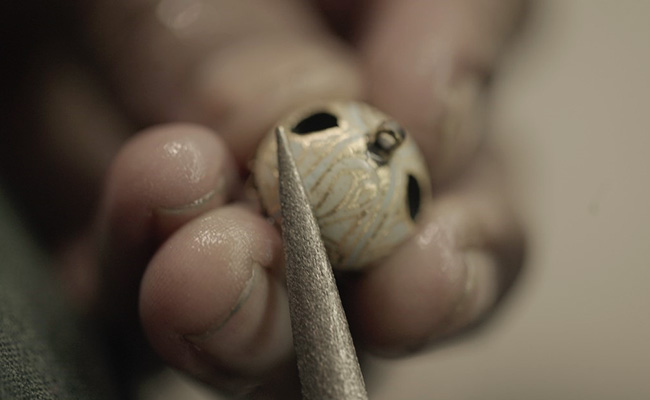
After each round in the furnace, the pieces are polished to ensure the Meena enamelling is even
After each application and heating process, excess enamel must be polished to see if any area needs to be redone. Vikas does not stop until he achieves perfection. While talking about the process of polishing, he casually remarks that you will carry some gold dust on your feet when you walk out of the workshop!
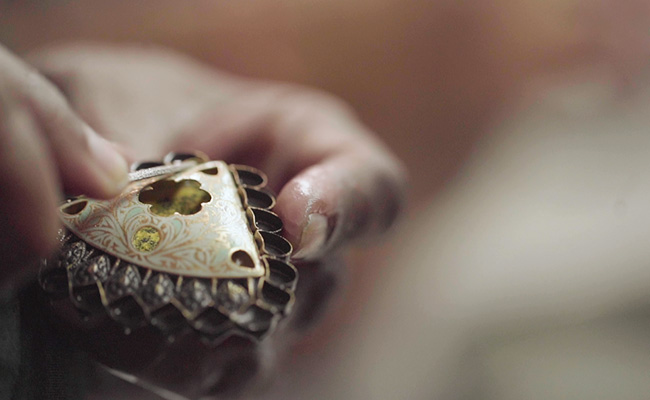
After each round of polishing, the piece is put back into the furnace
Once the final piece is ready, Vikas files the jewellery piece and puts it in acid to ensure that the colours set permanently.
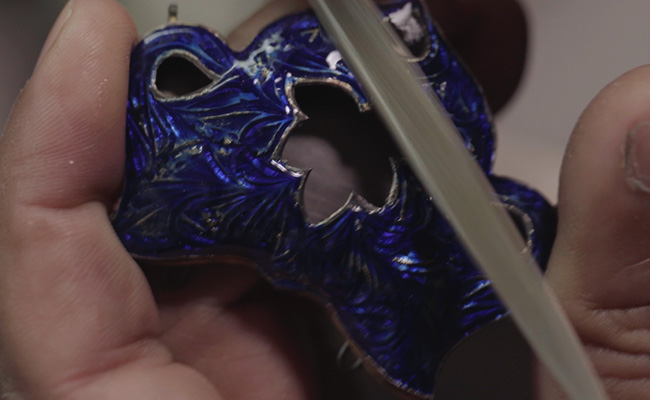
Filing after the final round in the furnace
At this point, Ramesh Soni divulges that in case the colours do get mixed up, they are painted back together using a needle with pinpoint precision.
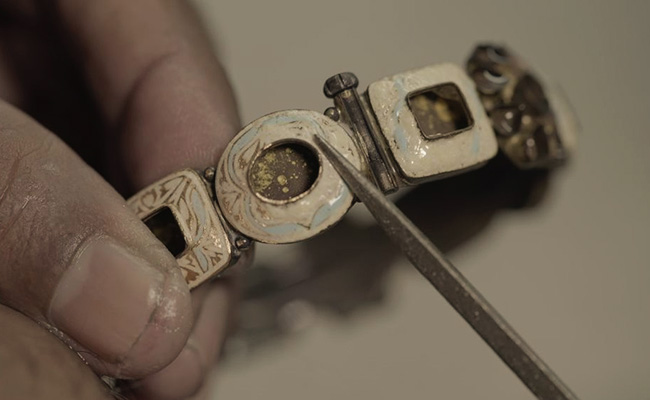
Jewellery credits: Nemichand Soni Manufacturers, Jaipur Contact No. 1412573760 1412310120
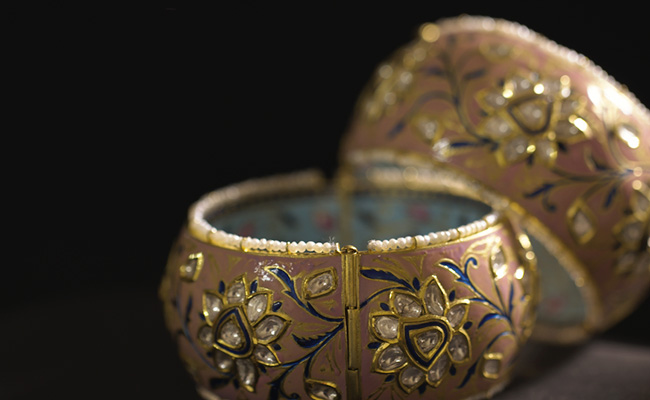
Jewellery Credits: SD Gems and Jewellery, Jaipur
There is a perceptible shift in energy in the room when the Meenakars start talking about the more challenging jewellery pieces they have had to work with. Exchanging knowing glances and smirks, they say that the more complicated the application on a piece or engraving, the more rewarding the work feels to them. Ramesh Soni candidly tells you that owing to the circular shape of the bangles, if they have engravings on both sides, the Meenakari process is a critical balance between refined accuracy and instinct. The bangles are put on top of a plate and rotated with pliers to distribute the heat evenly. This ensures that the enamelling is consistent on both the sides.
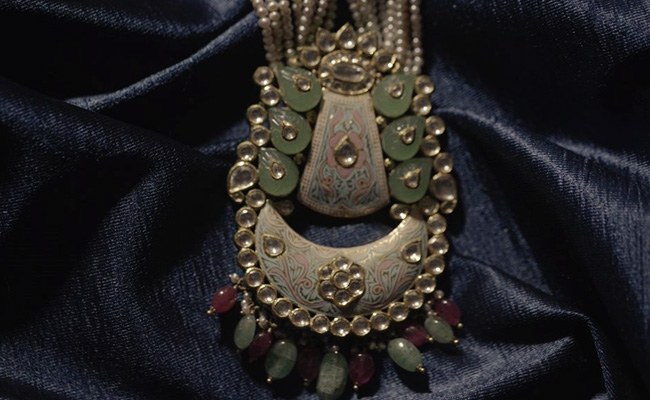
Jewellery credits: Nemichand Soni Manufacturers, Jaipur Contact No. 1412573760 1412310120
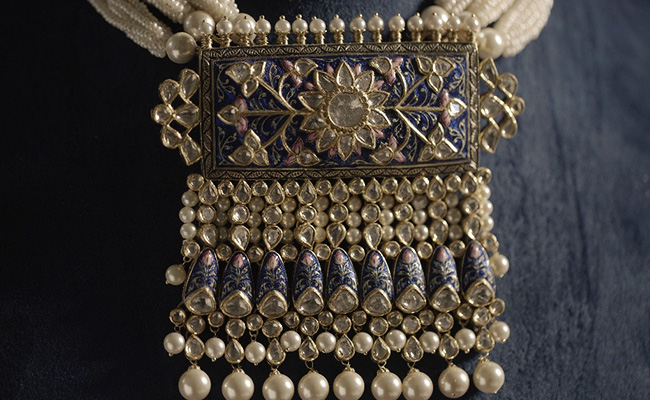
Jewellery Credits: SD Gems and Jewellery, Jaipur
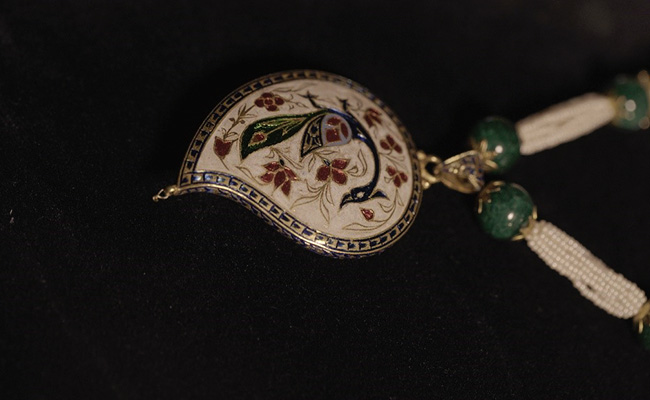
Jewellery Credits: Geet Jewels, Jaipur
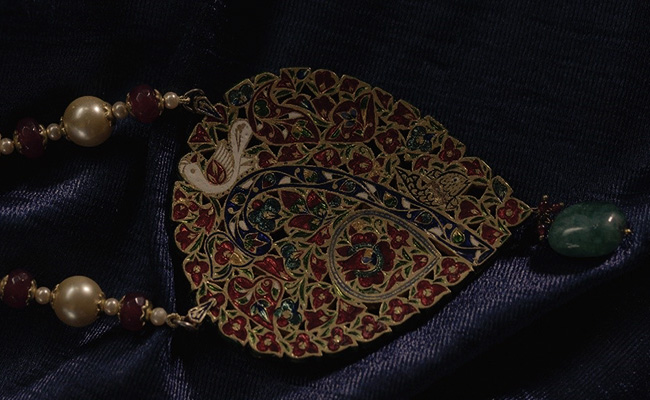
Jewellery Credits: Geet Jewels, Jaipur
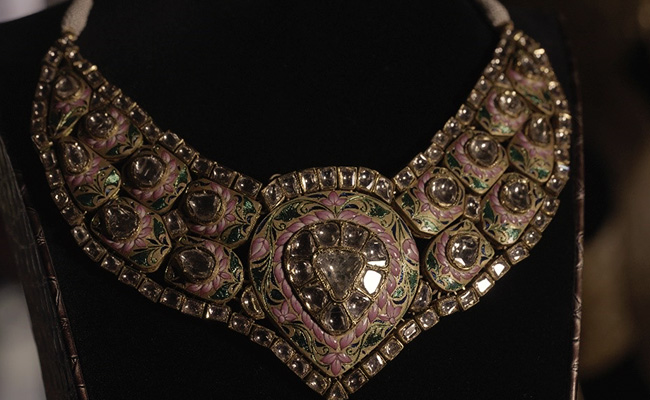
Jewellery Credits: Geet Jewels, Jaipur
Time for the Meenakars to shine as colourfully as the Meenakari
As you step out of the workshop, you stand still for a moment to take it all in. You understand the timelessness, intensity, and importance of what you just saw. And you realise that as glad as you are that India is progressing and keeping up with the global powers, you are also really grateful that sacred traditions are being maintained unhindered. You are thankful that the art form of Meenakari will not wither away because Meenakars like Vikas and Ramesh Soni have dedicated their lives to keep an age-old art alive. They remind you of the old guard, of a time that’s passed but definitely not forgotten. You walk away, a changed person, with a changed worldview. You know the next time you come across a Meenakari jewellery piece, you will have a deeper appreciation and gratitude for this art form.Each handcrafted piece is a manifestation of the Meenakar’s imagination, making it a privilege to acquire one of these wondrous creations.
